Which two statements are true regarding high availability (HA) on FortiAnalyzer? (Choose two.)
A rogue administrator was accessing FortiAnalyzer without permission, and you are tasked to see what activity was performed by that rogue administrator on FortiAnalyzer.
What can you do on FortiAnalyzer to accomplish this?
Which statement describes online logs on FortiAnalyzer?
Why must you wait for several minutes before you run a playbook that you just created?
What does the disk status Degraded mean for RAID management?
What must you consider when using log fetching? (Choose two.)
Which two settings must you configure on FortiAnalyzer to allow non-local administrators to authenticate to FortiAnalyzer with any user account in a single LDAP group? (Choose two.)
An administrator has configured the following settings:
config system global
set log-checksum md5-auth
end
What is the significance of executing this command?
What is the purpose of trigger variables?
Which two statements are true regarding the outbreak detection service? (Choose two.)
Refer to the exhibit.
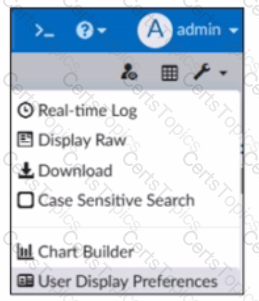
What is the purpose of using the Chart Builder feature on FortiAnalyzer?
Logs are being deleted from one of your ADOMs earlier that the configured setting for archiving in your data policy. What is the most likely problem?
Which two statements are true regarding FortiAnalyzer log forwarding? (Choose two.)
Refer to the exhibit.
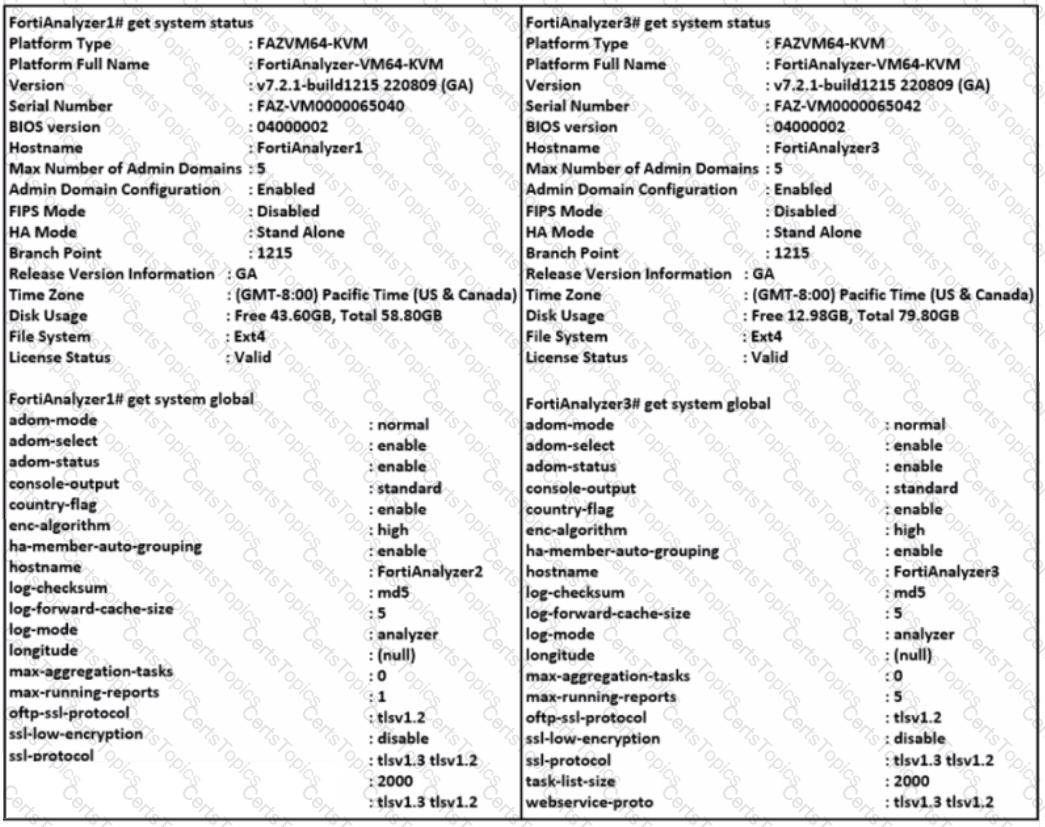
Based on the partial outputs displayed, which devices can be members of a FortiAnalyzer Fabric?
For proper log correlation between the logging devices and FortiAnalyzer, FortiAnalyzer and all registered
devices should:
What is the purpose of a dataset query in FortiAnalyzer?
Refer to the exhibit.

Which statement is correct regarding the event displayed?
An administrator has moved FortiGate A from the root ADOM to ADOM1.
Which two statements are true regarding logs? (Choose two.)
After you have moved a registered logging device out of one ADOM and into a new ADOM, what is the
purpose of running the following CLI command?
execute sql-local rebuild-adom
View the exhibit.
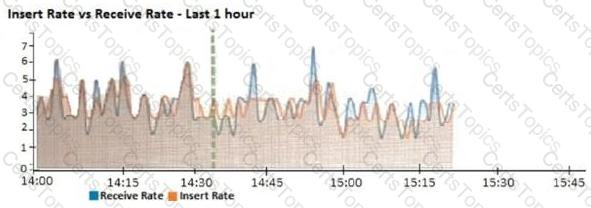
What does the data point at 14:35 tell you?
Why should you use an NTP server on FortiAnalyzer and all registered devices that log into FortiAnalyzer?
What is the best approach to handle a hard disk failure on a FortiAnalyzer that supports hardware RAID?
What are two effects of enabling auto-cache in a FortiAnalyzer report? (Choose two.)
On the RAID management page, the disk status is listed asInitializing.
What does the statusInitializingindicate about what the FortiAnalyzer is currently doing?
Which two of the following must you configure on FortiAnalyzer to email a FortiAnalyzer report externally?
(Choose two.)
For which two SAML roles can the FortiAnalyzer be configured? (Choose two.)
What FortiGate process caches logs when FortiAnalyzer is not reachable?
Refer to the exhibit.
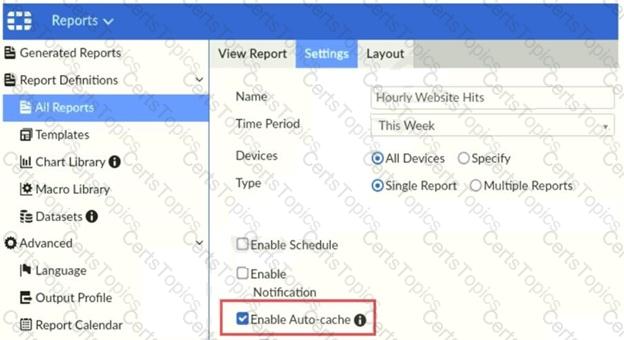
Which two statements are true regarding enabling auto-cache on FortiAnalyzer? (Choose two.)
Consider the CLI command:

What is the purpose of the command?
Which statement is true regarding Macros on FortiAnalyzer?
What statements are true regarding the "store and upload" log transfer option between FortiAnalyzer and FortiGate? (Choose three.)
Why run the command diagnose sql status sqlplugind?
An administrator has moved FortiGate A from the root ADOM to ADOM1. However, the administrator is not able to generate reports for FortiGate A in ADOM1.
What should the administrator do to solve this issue?
Refer to the exhibit.
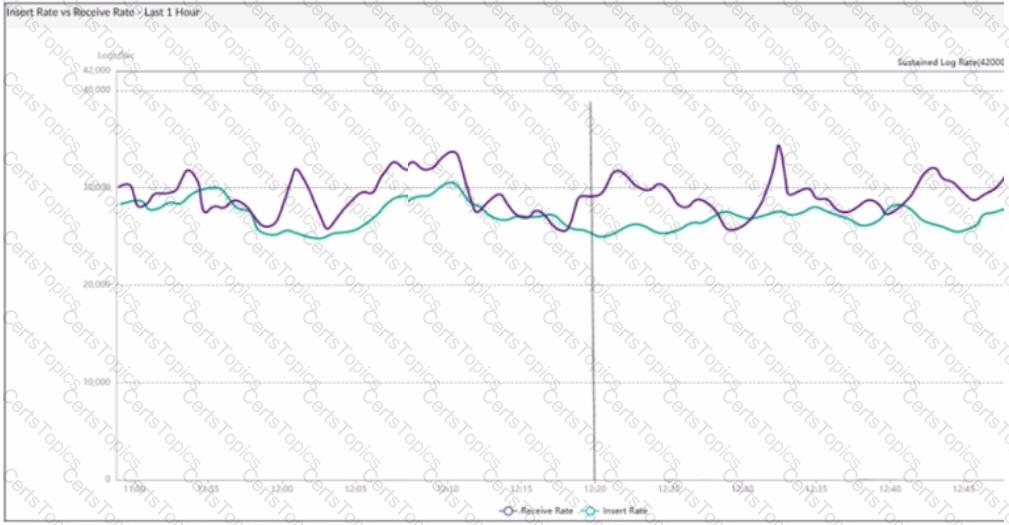
What does the data point at 12:20 indicate?
If a hard disk fails on a FortiAnalyzer that supports software RAID, what should you do to bring the
FortiAnalyzer back to functioning normally, without losing data?
Refer to the exhibit.
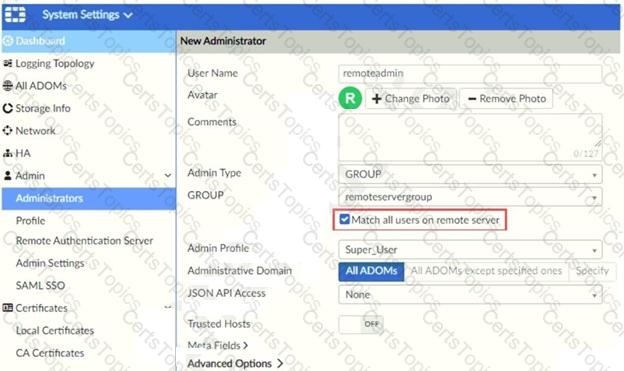
The exhibit shows “remoteservergroup” is an authentication server group with LDAP and RADIUS servers.
Which two statements express the significance of enabling “Match all users on remote server” when configuring a new administrator? (Choose two.)
What happens when a log file saved on FortiAnalyzer disks reaches the size specified in the device log
settings?
Which statements are true of Administrative Domains (ADOMs) in FortiAnalyzer? (Choose two.)
What are offline logs on FortiAnalyzer?
Which daemon is responsible for enforcing raw log file size?
Which clause is considered mandatory in SELECT statements used by the FortiAnalyzer to generate reports?